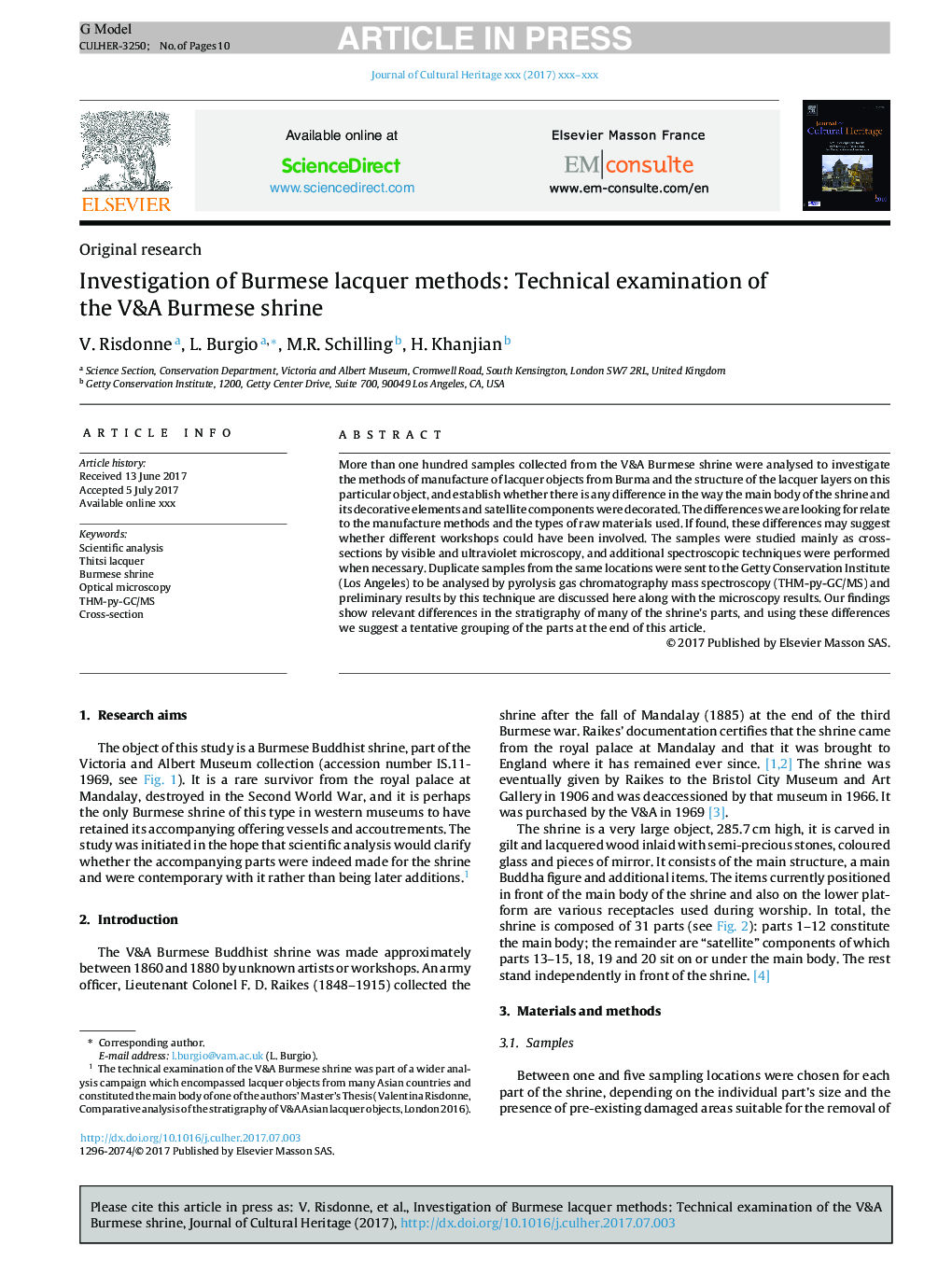| Article ID | Journal | Published Year | Pages | File Type |
|---|---|---|---|---|
| 7445930 | Journal of Cultural Heritage | 2018 | 10 Pages |
Abstract
More than one hundred samples collected from the V&A Burmese shrine were analysed to investigate the methods of manufacture of lacquer objects from Burma and the structure of the lacquer layers on this particular object, and establish whether there is any difference in the way the main body of the shrine and its decorative elements and satellite components were decorated. The differences we are looking for relate to the manufacture methods and the types of raw materials used. If found, these differences may suggest whether different workshops could have been involved. The samples were studied mainly as cross-sections by visible and ultraviolet microscopy, and additional spectroscopic techniques were performed when necessary. Duplicate samples from the same locations were sent to the Getty Conservation Institute (Los Angeles) to be analysed by pyrolysis gas chromatography mass spectroscopy (THM-py-GC/MS) and preliminary results by this technique are discussed here along with the microscopy results. Our findings show relevant differences in the stratigraphy of many of the shrine's parts, and using these differences we suggest a tentative grouping of the parts at the end of this article.
Related Topics
Physical Sciences and Engineering
Chemistry
Physical and Theoretical Chemistry
Authors
V. Risdonne, L. Burgio, M.R. Schilling, H. Khanjian,
